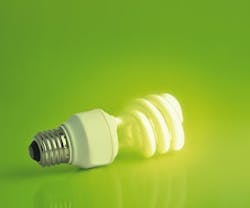Boost your sustainability initiatives with precision lighting systems, which can control, automate, and customize your lighting solutions down to the lamp. Your tenants can adjust individual light levels without disturbing their coworkers, and you’ll know right away when a bulb is failing or burned out.
Many precision controls can be integrated into your existing building automation system. Coordinate them with occupancy sensors to make sure empty rooms aren’t wasting energy, or add daylight sensors to balance artificial light with natural light. Having such precise control provides you with an easy way to tailor lighting to everyone’s specific needs while still cutting energy consumption.
"People performing different tasks want different amounts of light," says Tom Hinds, product manager for the Energi Savr Node by Lutron Electronics. "In a graphic arts department, they’re staring at computer screens all day long, so they don’t want a lot of light. By tuning the lights to their needs, their eyes aren’t bothering them, and they’ll be less likely to get up and take breaks. You’re enhancing comfort while saving energy."
Imagine the Possibilities
Scalable lighting control systems can spread these capabilities over a floor, a building, or a campus to give you even more visibility. Consider a system that grants control over fixtures or small zones to individual employees with dimming switches or software, allowing anyone who needs full brightness to have it while ensuring a comfortable, cost-cutting approach for workers who benefit from constant dimming. Some products even come with presets for office applications, says Ron Flores, CEO of World Energy Control Corporation.
"Don’t worry about ‘Am I getting the best light?’ Just tell the system this is an office and I’ve got a computer, and it knows what kind of footcandles to put out so you don’t get office glare," Flores says. "In a conference room, you only need 30 footcandles, so why have 100?"
This ease of use is vital, adds Doug Avery, project manager for Southern California Edison’s Technology Test Centers. A control system may be capable of great things, but if it’s not easy to use, users may not put in the time to learn how to operate it, negating any potential savings.
"What really is key is ease of operation and ease of maintenance," Avery says. "A lot of control systems are incredibly complicated. They’re put in, someone learns how to operate them, they leave, and someone new comes in and has no idea how to operate them. It needs to be sustainable."
Waste Less, Pay Less
Implementing precision controls and monitoring them closely can save 20-30% on energy, depending on how the system is customized, according to Mark Havira, senior energy consultant at Efficient Lighting Consultants. Using LEDs or induction lamps instead of older, less efficient bulbs ensures maximum savings. Tying your lamps to wireless controls can shave a little more off your utility bills. Look for an established company with a good track record on similar systems, and have an idea of what you want before talking to a vendor.
Office environments and buildings with nonstop electricity needs, like hospitals and industrial facilities with multiple shifts, are likely to see the most dramatic benefits, according to Scott Jordan, product manager for Schneider Electric’s Commercial Lighting Control division. Precision lighting is making its mark in many other applications, from retail to education.
"In health care environments, the patient room becomes an individual space," Jordan says. "If you can put the control in patients’ hands and allow them to adjust their light level, you’re providing better patient care. In most hospital rooms, if you want to turn off the lights, you have to push the call button and ask the nurse, ‘Can you turn off that light for me?’"
The widely customizable systems and ability to pinpoint where problems lie are precision’s greatest appeal, adds Josh Slobin, director of marketing at Daintree, the developer of a software platform that harnesses lighting controls.
"If you can have the capability to control something in a more granular and intelligent way, why would that be bad?" Slobin says. "The capability is universally a good thing, as long as it’s in the right hands and being used to save energy or get more intelligent about the way lighting is used."
Janelle Penny ([email protected]) is associate editor of BUILDINGS.
()
About the Author
Janelle Penny
Editor-in-Chief at BUILDINGS
Janelle Penny has been with BUILDINGS since 2010. She is a two-time FOLIO: Eddie award winner who aims to deliver practical, actionable content for building owners and facilities professionals.

